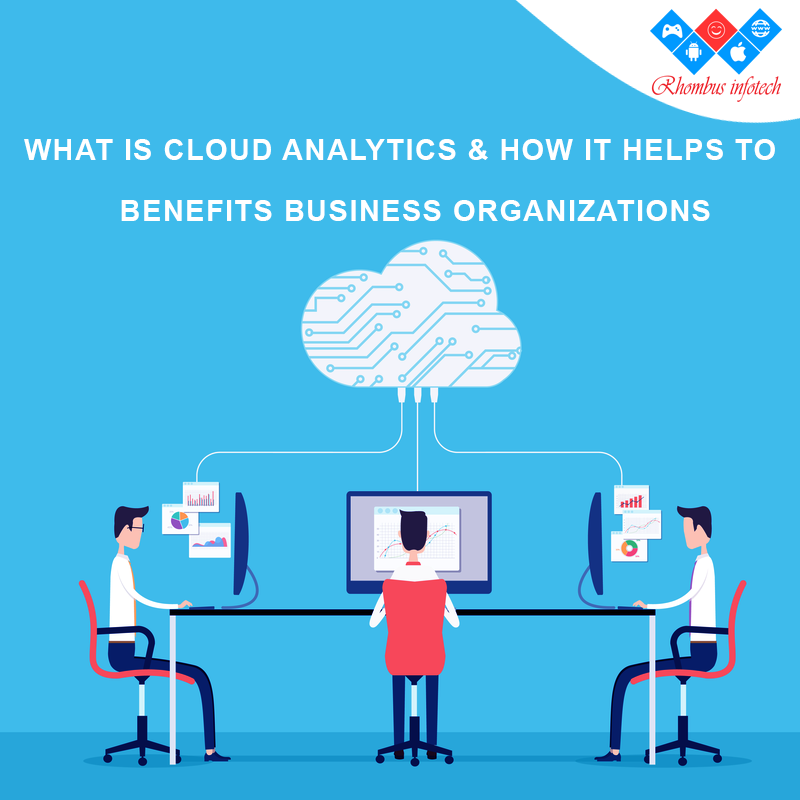If you are business owner where your business generates large amount of datasets then you should know about the term cloud analytics. Cloud analytics generally works on large data sets involves the activity of tracking & analysis of data which happens on the cloud hosted systems rather than on premises system infrastructure. These cloud-based analytics & data wrangling tools allow business experts to wrangle large data sets to improve business results. Cloud analytics is a best promising solution to analyze your business website traffic, work efficiency of business, satellite oriented outputs & many more. Simply, it can define by referring to the use of cloud based tools & services to analyze data sets. In many cases, the data being analyzed is created in the cloud, or even on an enterprise’s own systems and is streamed to the cloud for analysis. This can include video from security cameras, social media posts, log files, and more. As data becomes a larger part of modern computing, it makes sense that more and more tools will be developed to analyze it.
Cloud analytics has a different categories used for all analytical techniques to analyze data. Depending on the type of cloud analytics solution, users will have different requirements in terms of capabilities and business needs. For example, on-demand analytical process require for real-time decision-making in a closed-loop system are designed for organizations that need to quickly respond to real-time events. On-demand analytics services are usually used in mission-critical industries and business processes. Because these organizations deal with very rapid changes in their environment, timely decision-making is necessary.
Depending on your business needs and goals, among other considerations, one of the types of cloud models below may make sense for your analytics platform.
Public Cloud
A public cloud is a platform offered by third-party providers over the public internet, making them available to anyone who wants to use or purchase them. It uses a standard cloud computing model to make resources, including virtual machines, applications and storage, available to remote users. The most common public cloud resources you may use regularly are websites, shopping applications & software as a service applications (SaaS) which handle emails, project management services & your banking management tasks.
Private Cloud
A private cloud is an on demand computing infrastructure system which only works within your company’s private network & these are not shared with other business organizations. They work similarly to your company’s intranet and other resources you can only use when you’re in the office or connected with a virtual private network (VPN). All clouds become private clouds when the underlying IT infrastructure is dedicated to a single customer with completely isolated access. Private clouds provide increased infrastructural capacity to handle large data storage, on-demand services and increased visibility into resources across the infrastructure.
Hybrid Cloud
Hybrid cloud is a solution that combines a private cloud with one or more public cloud services. It uses proprietary software to enable communication between each distinct service. A hybrid cloud strategy can connect multiple computers through a network, consolidate IT resources, move workloads between environments and incorporate a single, unified management tool.
Key Benefits of Cloud Analytics
Cloud analytics offer access to more processing power for analyzing large data sets than programs that run on local servers or your computer.
Cloud analytics software is accessible to anyone in your business with the right credentials and kept safe with strong security protocols.
Advanced cloud analytics tools include AI algorithms that help you understand trends and opportunities in very big data sets.
Cloud analytics software takes large databases and other data sets and the information into useful summaries and insights — sometimes via visualizations or charts — that inform business decisions. Some cloud analytics software is focused on just one type of data, like social media interaction or website usage. Others are broad and work with a number of data sets, no matter how disparate, to provide a clean picture of how your business is progressing. When you use the cloud, your team can capitalize on powerful computing resources in remote data centers, allowing you to handle larger tasks that may have required a supercomputer not long ago. Once the data is imported, employees and others can log in via their computer, smartphone or tablet to view and work with the results.

